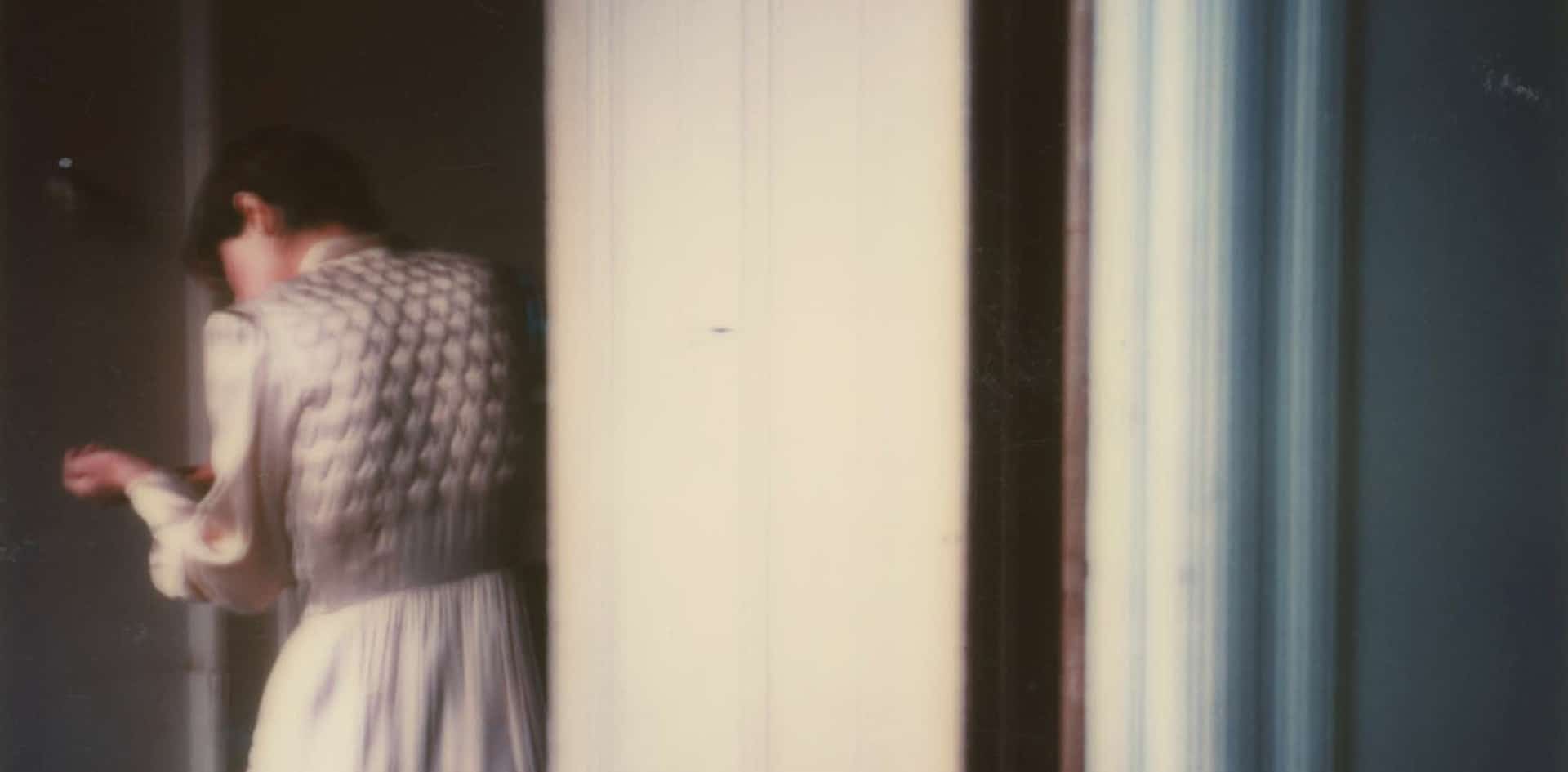It’s hard to pinpoint what precisely makes a Duane Michals image. With a prolific career, Michals’s oeuvre has ranged from portraits of Andy Warhol to images of Alaskan natives, with thousands upon hundreds of unseen images sitting in his archives, all ranging in function and form. Over the past year, Michals has engaged in an archival excavation, pulling images (some seen, some unseen) and creating digital booklets that he sends out weekly.

In one of his latest digital books, Cocoon, Michals weaves together 1980s Polaroids and sheets of music. The original Polaroids feature a woman in her apartment, wearing a vivid red robe, then peeling off layers to reveal a white dress underneath. There’s a haze to these photographs, a slightly dreamy, ethereal quality with the colors bleeding into one another.
Throughout his career, Michals has taken so many images that as he sifts through his archive, he begins to see new stories within the photographs. He remembers this woman, but can’t remember what the original impetus of the series was. The sheets of music, however, were a recent discovery; Michals found the old book somewhere in the countryside, filled with hand-written original compositions in elegant blue ink. Combined with his old Polaroids, together they created a new story in his mind.

“I love to introduce the idea of music with photography because photography is always so silent,” says Michals. “It’s photography. I was going to say it keeps its secrets—but not always. But it’s a category on its own. And I like to imply music. I like to imply sound.”
It’s one of the reasons why Michals has time and time again been drawn to film as another medium: the ability to combine sound and image. But with the book of music, he found a way to bring the two together in static form. “I was so thrilled to have [the book] and then it was wonderful to have it with this lady because I hear music with those pictures,” he continues. “Those pictures resonate with sound in a way. And I loved putting them together. I thought that those photographs are perfect for the hint of a sound.”


As with all of his booklets, Michals combines his images with poetry. In Cocoon, he writes: “If she could find her way through the labyrinth, she would find happiness.” Later, on the phone, he explains: “It was about this woman—I call it ‘Cocoon’ because she was living in a cocoon and she kept going from room to room. It was very emotional for me. And then she would change wardrobes, like dropping off the skin of a cocoon, and her changing costume indicated the changing of her feelings. And in the very end, she finally turns away from the camera and she emotionally evolves. But she doesn’t free herself from the cocoon.”
The images are too hazy to clearly make out her facial expressions, but there’s a sense of pensiveness present, bordering on melancholy. “She moved from room to room, more like a lament than a waltz,” he writes in the booklet. In one photograph, only the bright pop of red from her robe is clearly visible as she recedes into the shadows, with the robe pulled up to her face protectively. The delicate, veiled effect of these Polaroids betrays her vulnerability; it’s an effect that Michals is fond of.


“I liked doing this because I like the softness of it. It’s like you’re dreaming something,” he says. “If everything is soft, you have the impression of something. It’s all like a dream or a memory of something.”
The booklet could also be read as an operetta, with still shots serving as an interlude between the sheets of music. It’s an effect that isn’t accidental. “I see everything as theater,” says Michals. “I love theater and I like when you take a photograph that contradicts reality.” He also cites the Surrealist painter Rene Magritte as having provided great inspiration for him: the sense of contradiction, the idea of making something look real that is just an illusion.
For Michals, his work is rooted firmly in storytelling, rather than straight documentary. Illusions are required in order to weave these tales; and for Michals, spontaneity is of the utmost importance. He mentions a film he’s planning to shoot soon, which will incorporate the music from this booklet, recorded for the first time. As for the film’s concept: “I have no idea,” he says. “Well—I have a rough, rough idea, but I always count on something happening that I haven’t figured on. It’s not so structured in my head that there’s no wiggle room. I count on wiggle room.”


The wiggle room allows for spontaneity to create. Sometimes it works, and sometimes it doesn’t. But the thing that Michals abhors most is pretension, and to avoid that, he likes to work on the fly. “Oh yeah, I like flaws. I like mistakes. I hate perfection,” he says. “I think poetry is in mistakes and imperfection. Perfection is not poetic. Poets are vulnerable people. They express their vulnerability in language. And I don’t like my work to be perfect; I like it to be flawed. People get trapped in success—and you must be vulnerable, and you must fail.”
Duane Michals continues to work on these booklets, churning them out weekly, while planning for other projects like his upcoming film. He likes to keep moving. “Anything that pops to mind is a gift,” he says, and a gift that he’ll write down and pursue. “Right now I’m working on three things. If I think of it on Monday, I’ll be done by Friday. And I can’t wait to see what I’m going to come up with next.”
By Christina Cacouris
Christina Cacouris is a writer and curator based in Paris and New York.



